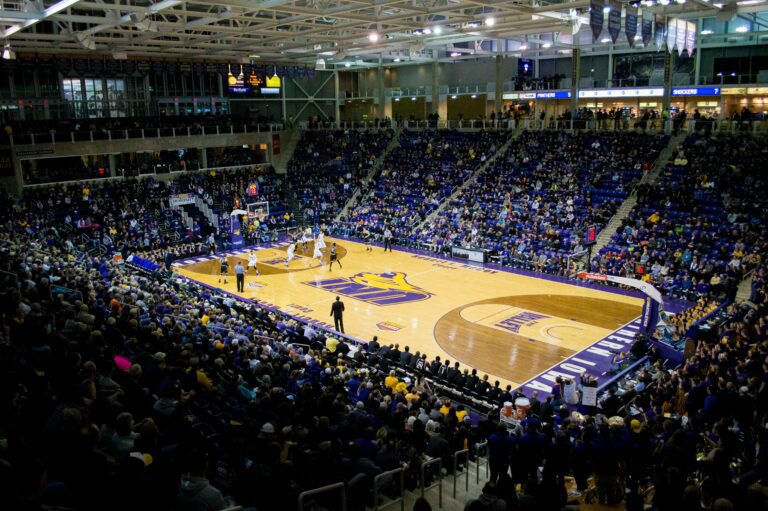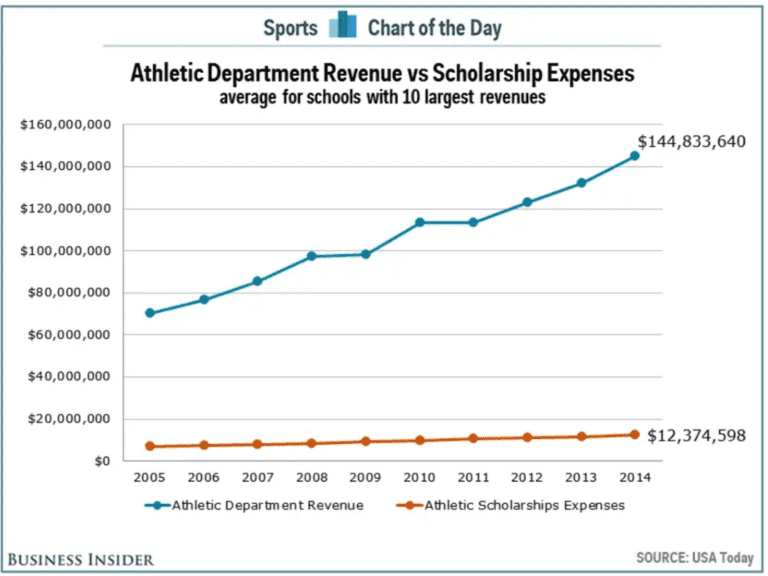
Depending on where you’re from, college sports may be a multi-billion dollar industry that you know nothing about.
If you’re an American, your familiarity with American college sports is probably related to whether your home state has professional sports teams. If you’re from, for example, New England, you might only think of SEC football teams as sources for future NFL players; whereas if you’re from Alabama, you might have a back tattoo that says “Roll Tide”. (No judgment! We love passion here at Pickaxe!)
Because they’ve been so regional in the past, college sports have been a somewhat niche enterprise. But that’s changing. With SVODs providing a near-infinite inventory of sports, and breakthrough phenoms like Caitlin Clark, new fans are being minted every day.
As big time dorks, we love doing deep dives into trends and shifts in the cultural landscape (especially when there is so much data involved). And because so much has been happening with college sports, we decided to nerd out a little about the topic. Here’s some background on how college sports are evolving, and what opportunities these changes are creating.
What’s the score with college sports?


So what does this mean from a business perspective?
The end of the Monoculture means more eyeballs
Now, in addition to linear channels, streaming services are providing an opportunity for sports inventory that otherwise would previously have been inaccessible, allowing more fans to watch both college and pro-games on services like Peacock, ESPN+, or Paramount+. Because of the size of their libraries and the on-demand nature of their platforms, SVODs are uniquely positioned to provide coverage for a breadth of sports that linear television was unable to handle alone.
Think about the way Peacock’s coverage of the 2024 Olympics bolstered interest in the competition. Because Peacock was able to deliver comprehensive programming for every single sport, niche sports like shooting and breaking captured the public’s imagination, and interest in these sports skyrocketed.
The same phenomenon is possible for college sports. The growing breadth of college sports offerings has affected sports viewership culture. Fans can now be introduced to sports like college volleyball, tennis, and regular season gymnastics – previously “niche” sports that are now accessible to casual viewers. And uptick in awareness for college sports means a rise in revenue – as well as new avenues for brands to access audiences.
Plus, the end of the Monoculture means more data
The new NIL market means new interest
Since college sports rosters have to turn over every year (people graduate!), there’s always been an interest in recruiting student-athletes for the future year, but the NIL marketplace could lead to increased attention on high school sports. Lately we’ve seen high school sports become more prevalent on SVODs like ESPN+, as well as an uptick in interest in local news stories about high school athletic competitions. As a compensation framework builds around the NIL of high school athletes, we’ll likely see an increased attention on their events.
New regulations also mean that Olympic athletes – both men and women – can receive sponsorship money through NIL deals and compete in collegiate sports. Three of the five gymnasts competing for the United States on the women’s team for the 2024 Olympic Games teammates have participated in collegiate gymnastics. Because of the new NIL rules, gymnasts like them will continue to be allowed to do so.
Growing interest in women’s sports means more attention for college teams
During March Madness 2024, all eyes were on Caitlin Clark and University of Iowa, and we’ve seen significant growth in fan bases for the WNBA as a result. As is the case with men’s basketball, fans will likely be interested in watching promising college athletes who are looking to be recruited in the coming years. Increased interest has allowed SVODs like Peacock to promote their conference deals to spotlight top performers like Caitlin Clark’s in-conference schedule games during her final year at Iowa.
It’s not just “revenue sports” like football and basketball – some of the athletes who make the most money off their NIL are gymnasts. And sports like volleyball are also attracting attention. In 2023, 92,003 fans flocked to Lincoln, NE for an outdoor Nebraska Cornhuskers’ volleyball match, the largest crowd for a women’s sports event. The end of sports monoculture and the breadth of SVOD offerings have made it possible to tap into the popularity of these traditionally less noted sports.
As the college sports industry continues to become more mainstream, we’re on the precipice of a new era of sports fandom, and it’s exciting to think about what new trends (and new data) will emerge in the next 5 years. We can’t say for sure where it’s going, but we can say one thing – thank goodness for Caitlin Clark.
